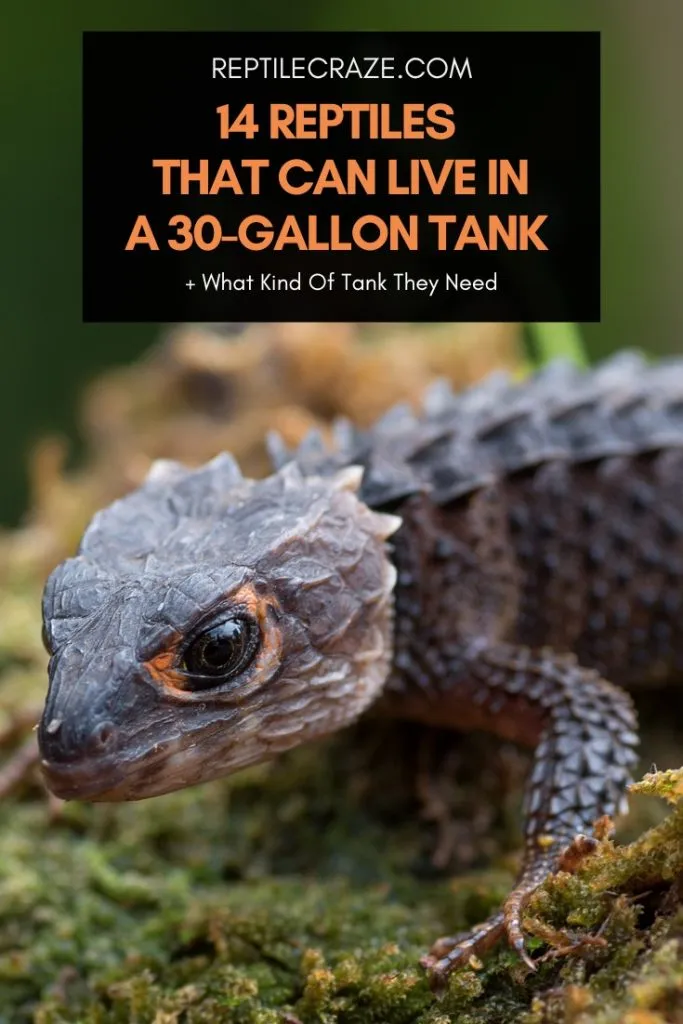
Many first-time reptile owners face an issue determining the right
It is necessary to provide a terrarium of 30 gallons (115 l) for adult Gidgee Skinks, Veiled Chameleons, Mourning Geckos, Rosy Boas, and Green Snakes or a group of brown anoles. You can also use a
This article aims to discuss the reptiles that ideally fit the 30-gallon
Table of Contents
What Reptiles Can I Keep in a 30-gallon Tank ?
The
On the other hand, you can use it for more sizable pets’ hatchlings and juveniles and replace it with a bigger model once your pet grows.
| Reptile type | Tank size | Tank shape |
| Male Corn Snake | 30 to 55 gallons (115 – 210 l) for adults 20 to 30 gallons (75 – 115 l) for juveniles | Tall |
| Adult Veiled Chameleon | 30 to 55 gallons (115 l) | Tall |
| Madagascar Giant Day Gecko | 25 to 30 gallons (95 – 115 l) | Tall |
| Juvenile Jackson’s Chameleon | 30 to 40 gallons (115 – 150 l) | Tall |
| Juvenile Ball Python | 30 to 40 gallons (115 – 150 l) | Wide or tall |
| Adult Green Snake | 30 gallons (115 l) | Tall or hexagonal |
| Mourning Gecko | 30 gallons (115 l) | Wide or tall |
| Adult Gidgee Skink | 20 to 40 gallons (75 – 150 l) | Wide |
| Juvenile Bearded Dragon | 20 to 40 gallons (75 – 150 l) | Wide |
| Adult Rosy Boa | 20 to 30 gallons (75 – 115 l) | Wide |
| A pair of Red-eyed crocodile skink | 30 gallons (75 – 115 l) | Wide |
| A group of brown anoles | 20 to 30 gallons (75 – 115 l) | Wide |
| Juvenile African Fire Skink | 20 to 30 gallons (75 – 115 l) | Wide |
| Juvenile Rankin’s Dragon | 20 to 30 gallons (75 – 115 l) | Wide |
You should pick out one of two models by required length, width, and height, depending on the reptile you want to take care of:
- Long 30-gallon
tank of 36 by 12 by 16 inches (91.50 x 30.50 x 40.50 cm) - Tall 30-gallon of 24 by 12 by 25 inches (61 x 30.50 x 63.50 cm)
Let’s list species that can spend their life or juvenile period in a 30-gallon
1. Corn Snake (Pantherophis guttatus)

The popular Corn Snakes enjoy climbing, so you should keep that in mind when buying the
Juveniles require one of 10 to 30 gallons, while adults can spend their life in a 30 to 55-gallon
We always recommend going with the bigger
2. Adult Veiled Chameleon (Chamaeleo calyptratus)

Unlike many other terrestrial chameleons, Veiled Chameleons are arboreal lizards that enjoy spending time climbing.
Therefore, you should buy a tall reptile
On average, juveniles are satisfied with a terrarium of 10 gallons. However, you should consider a better solution when your reptile becomes mature once it is ten months old.
Even though a
However, it is only justified if you prefer a space packed with vines and bamboo inside.
Wanna get a veiled chameleon? Our veiled chameleon care guide will surely help you!
3. Madagascar Giant Day Geckos (Phelsuma grandis)

With a total length of 12 inches (30.50 cm), the Madagascar Giant Day Gecko is the most sizable day gecko group member. The best enclosure for these lizards is a tall glass or plastic
On average, a terrarium of at least 30 gallons is a perfect lifetime home for one of these arboreal reptiles or a pair.
Take care to provide enough accessories for climbing to make it a comfortable home for your pet(s).
4. Juvenile Jackson’s Chameleon (Trioceros jacksonii)
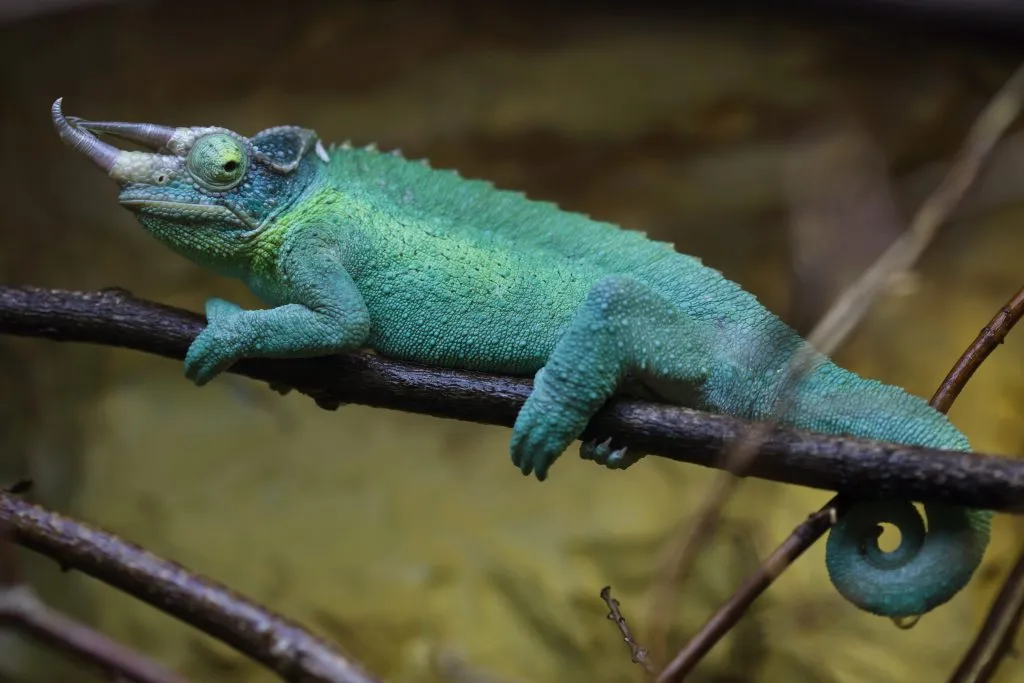
While your Jackson’s Chameleon (Three-horned Chameleon) is still young, it will be satisfied with a
The most important thing is to provide large branches, enough greenery, and a leafy cover for your lizard.
Since this species live in mountain thickets and forests, you should mimic this environment and allow your lizard to hide whenever it wants.
5. Juvenile Ball Python (Python Regius)

Many reptile owners consider Ball pythons the favorite captive snakes in the US. If you choose one for a pet, you should be prepared to buy at least two terrariums for it as it grows.
Despite spending most of a day curled, adults require a spacey
However, juvenile snakes prefer smaller, wide or tall tanks of about 30 to 40 gallons.
Tip: If you are interested in getting a ball python, read our ball python care guide here!
6. Smooth (Opheodrys vernalis) And Rough Green Snake (Opheodrys aestivus)
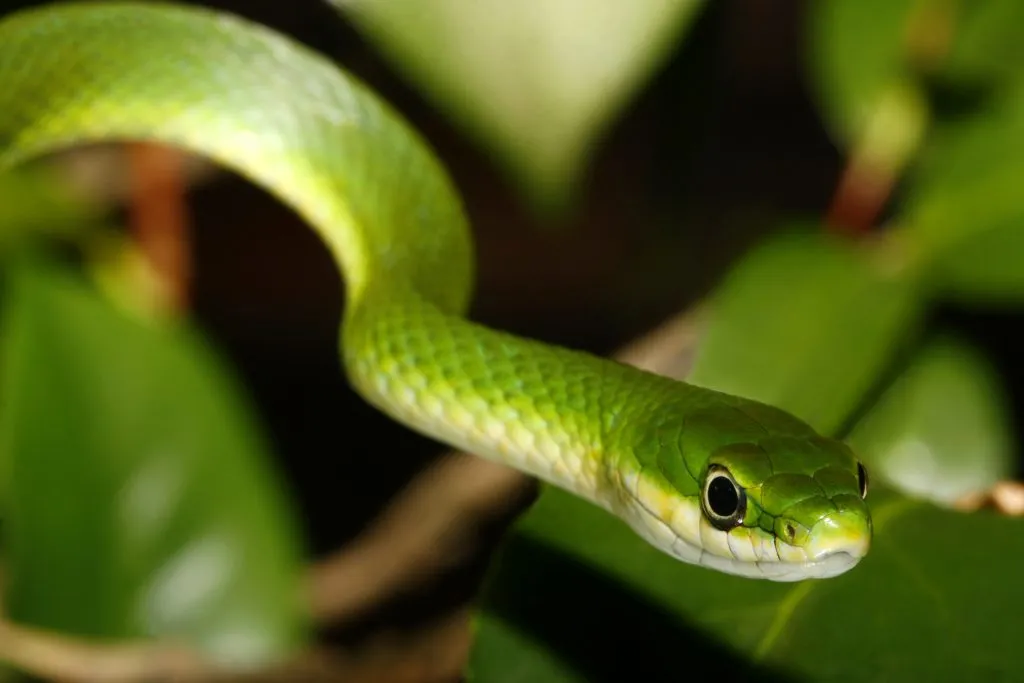
Once your Green Snake matures, you should provide a comfortable, escape-proof
This reptile will be perfectly happy in a vertical
Even better, you can provide a 30-gallon hexagonal terrarium with enough corners and space for hiding.
7. A Group Of Mourning Geckos (Lepidodactylus lugubris)

Even though your Mourning Gecko is only 3 to 4 inches (7.60 – 10 cm) long, it requires a sizable
Since these tiny lizards are friendly creatures, you can also keep two or three in the same wide or tall terrarium.
Be careful with these parthenogenic reptiles since they are unique and reproduce asexually.
An unpleasant surprise for those who don’t want to be inundated with hatchlings is that this species has no males. In other words, you can expect babies, despite having only one female in the
Tip: We wrote an entire guide on how to care for mourning geckos here!
8. Gidgee Skink (Egernia stokesii)
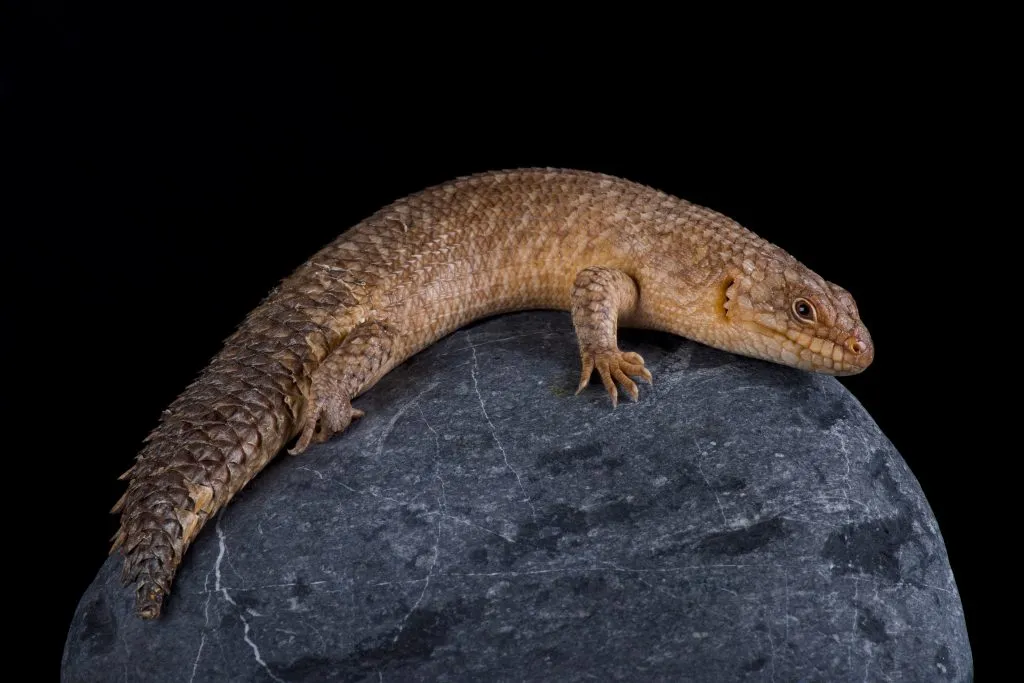
One 7 to 10 inches (18 – 25.50 cm) long Gidgee Skink is perfectly satisfied with a wide terrarium of 20 to 40 gallons.
This diurnal spiny-tailed Australian lizard prefers arid habitats and temperatures of 70 to 120 F (21 – 49 C). Since they enjoy living in groups, keeping at least two in the same
9. Juvenile Bearded Dragon (Pogona vitticeps)
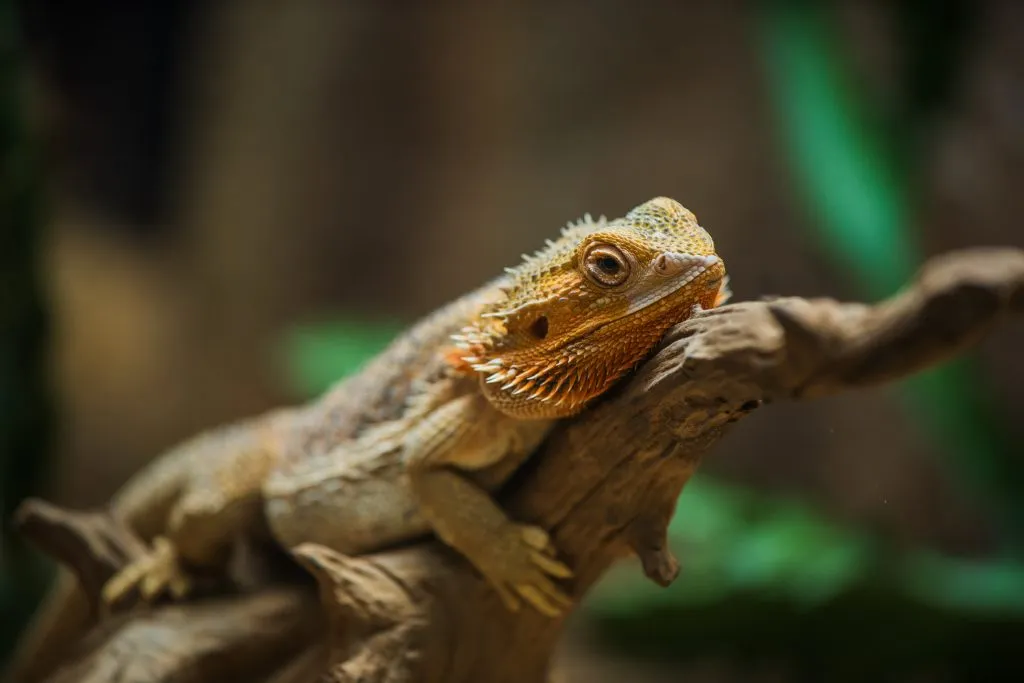
While adults require spacey tanks of 55 to 120 gallons, juvenile Bearded Dragon will enjoy living in a 20 to 40-gallon terrarium.
It should be wide enough to provide sizable space for running and exploring. Plus, adding a basking spot and convenient hiding places is necessary.
Tip: Need help with caring for your beardie? Read our beardie care guide here!
10. Adult Rosy Boa (Lichanura trivirgata)

An adult Rosy Boa prefers living in a horizontal
However, you should not exaggerate with size to prevent anxiety and eating disorders. You will make your pet additionally satisfied when adding enough hiding places inside the
If you would like to learn more about rosy boas, check out our rosy boa care guide!
11. A pair of Red-eyed Crocodile Skinks (Tribolonotus Gracilis)
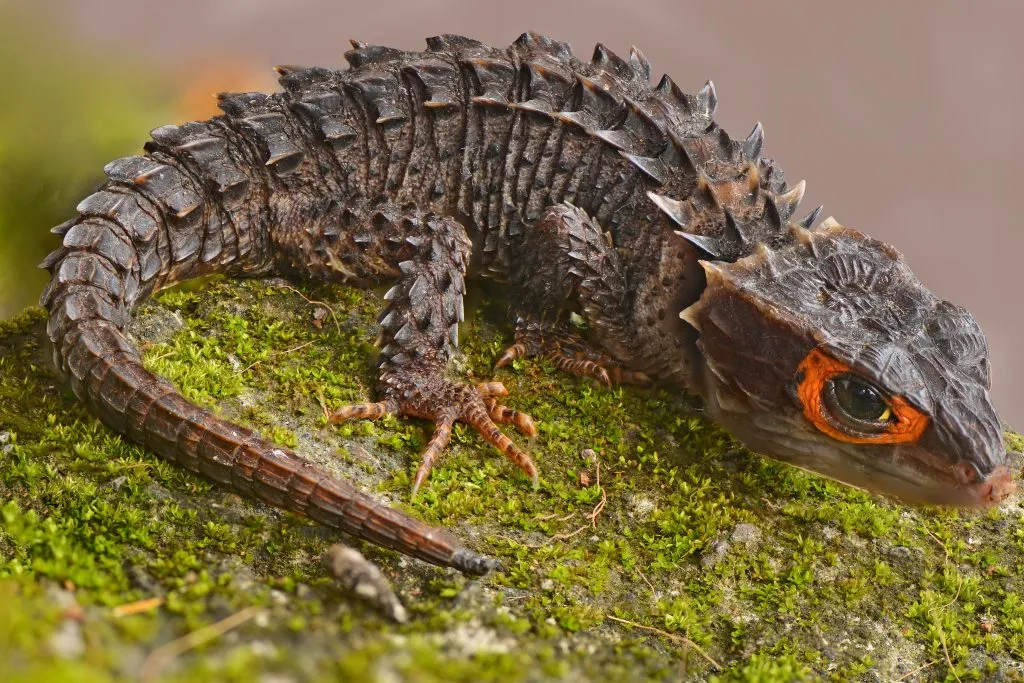
Red-eyed Crocodile Skinks’ full length is 7 to 10 inches (18 – 25.50 cm), so they don’t require a too sizable terrarium.
Owners disagree about the ideal
Remember that these reptiles live in tropical rainforest habitats, so you should fulfill the terrarium with plants and accessories.
Be careful with caves, rocks, and logs since they occupy much space, reducing the available room for playing and movement.
The best option for these lizards is a glass tank that is longer than it is high since this species doesn’t climb.
12. A group of Brown Anoles (Anolis sagrei)
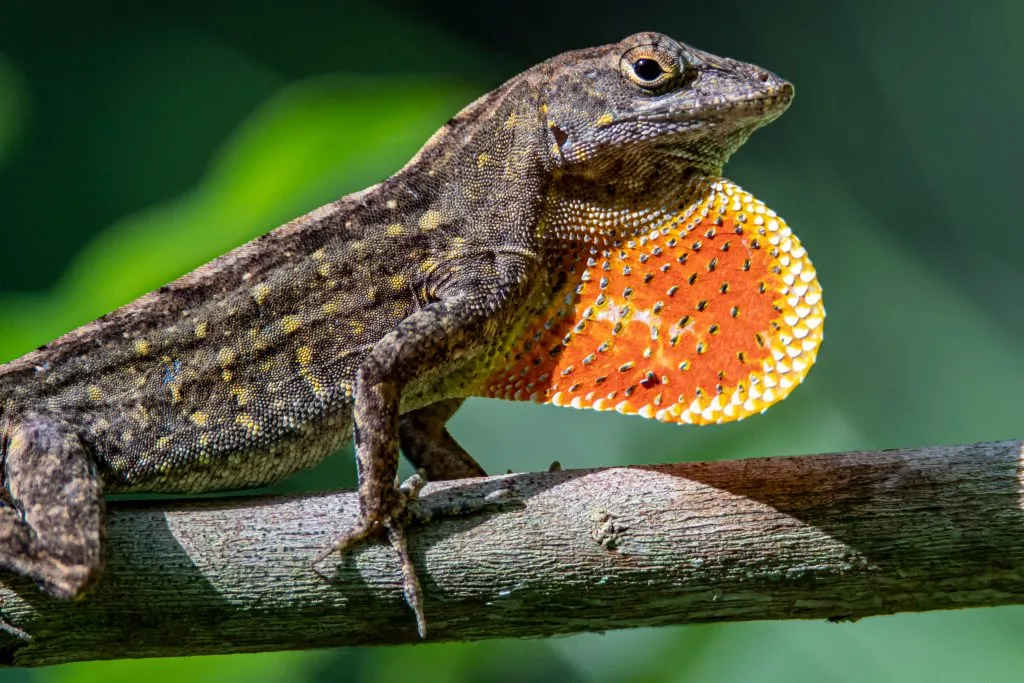
One Brown Anole doesn’t need too much space, and they are satisfied with a housing
Be careful with this decision since keeping more Brown Anoles together is not always the best solution. For instance, you should never keep two males together.
On the other hand, be prepared for hatchling when coupling a male with one or two females.
13. Juvenile African Fire Skink (Lepidothyris fernandi)
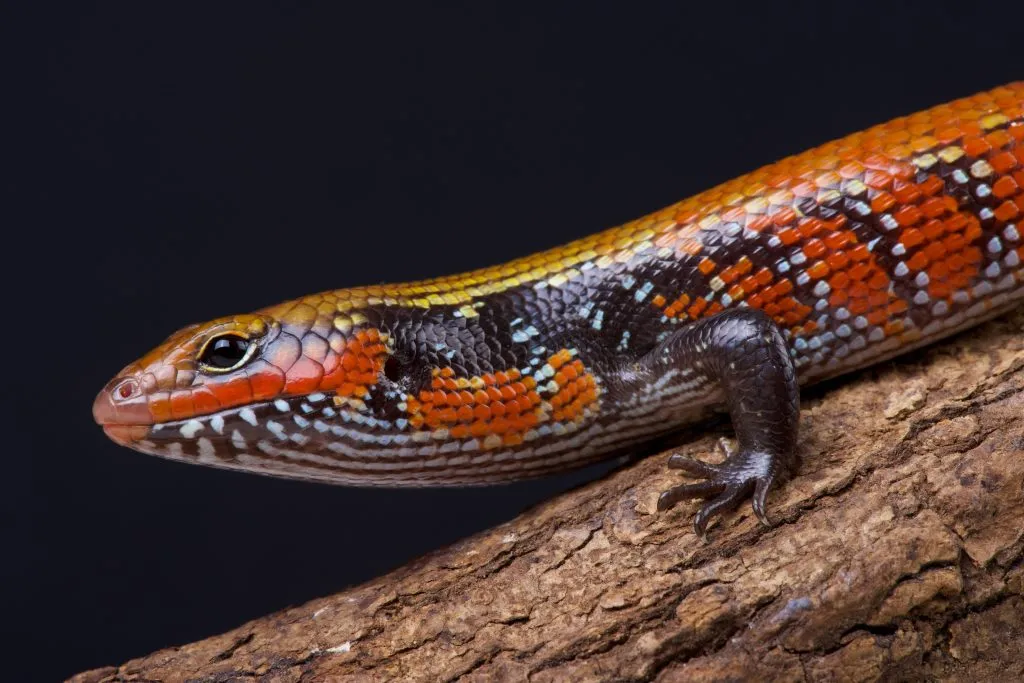
Since African Fire Skink is a 15 inches (38 cm) long lizard, you can guess that it requires a sizable
You can expect your pet to use all the space it has and enjoy hiding and playing. Therefore, it is necessary to provide enough greenery, branches, logs, and rocks to encourage its activity.
14. Juvenile Rankin’s Dragon (Pogona henrylawsoni)
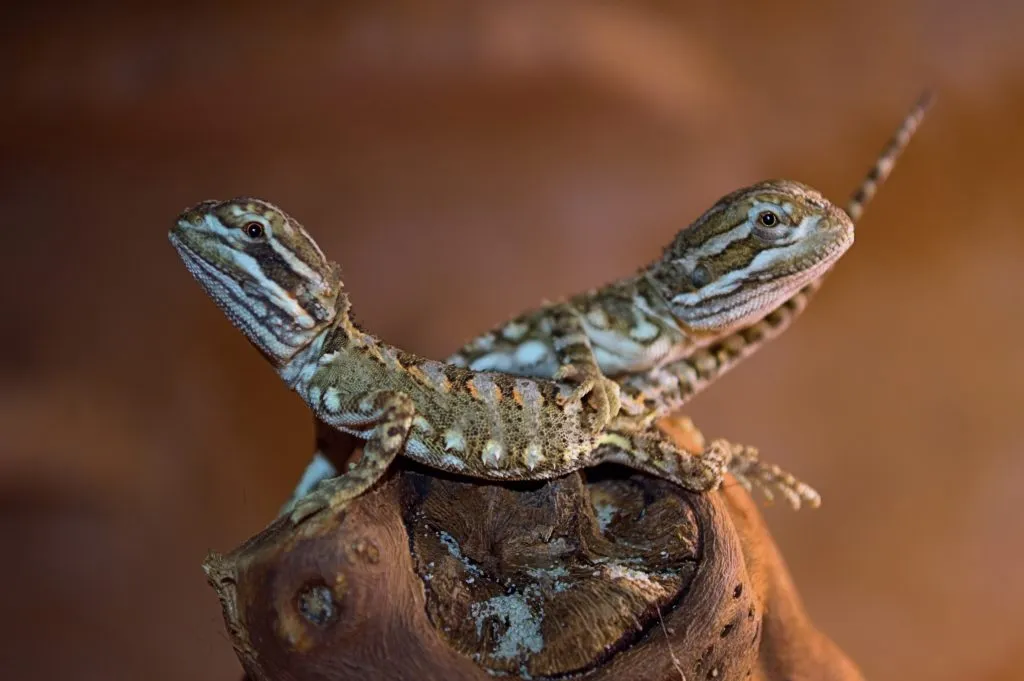
Rankin’s Dragon (Black-soiled Bearded Dragon, Pygmy Bearded Dragon) is an Australian lizard that can live in smaller spaces than standard Bearded Dragons.
In most cases, juveniles are satisfied with a horizontal, 20 to 30-gallon terrarium. It should be at least 36 inches (91.50 cm) long, but you should consider a more spacious place for adults.
Tip: You can check for relevant information about other terrarium sizes suitable for reptiles in our other articles discussing this subject.
We show you what reptiles can live in:
- A 5-Gallon tank
- A 10-Gallon tank
- A 20-Gallon tank
- A 40-Gallon tank
- A 55-Gallon tank
- A 75-Gallon tank
- A 100-Gallon tank
- A 120-Gallon Tank
Appropriate 30-gallon Tank Types for Reptiles
The
Even though each species requires a unique terrarium size and shape, you should be aware of a few general guidelines.
The first thing to consider is the proper
Lizards
The general recommendation is to get a
For instance, the best option for most species is a horizontal terrarium approximately three times longer than your pet’s length from snout to tail.
It also needs to be at least one and a half times taller than the accommodated reptile.
If your lizard lives in a vertical
Snakes
In general, snakes need a
These reptiles will feel comfortable when their space is at least 30% wider than their body. Plus, species living in trees require a terrarium with a depth equal to their own length.
- Enchi Ball Python: A Unique and Stunning Morph of Python regius - March 27, 2025
- Emerald Tree Monitor: The Enigmatic Green Guardian of the Rainforest - March 26, 2025
- The Egyptian Cobra (Naja haje): A Fascinating Serpent - March 25, 2025
